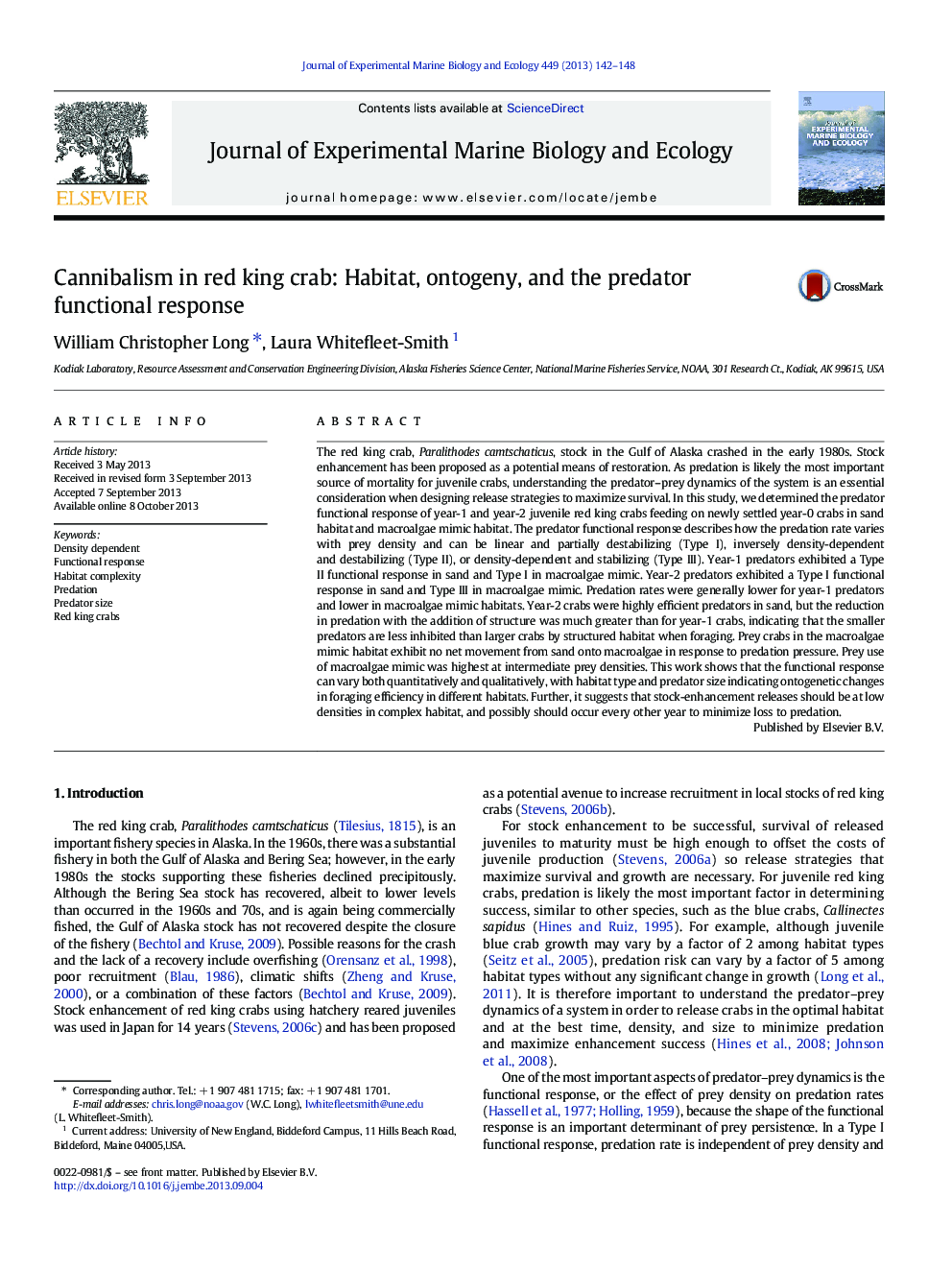| کد مقاله | کد نشریه | سال انتشار | مقاله انگلیسی | نسخه تمام متن |
|---|---|---|---|---|
| 6304275 | 1618426 | 2013 | 7 صفحه PDF | دانلود رایگان |
عنوان انگلیسی مقاله ISI
Cannibalism in red king crab: Habitat, ontogeny, and the predator functional response
ترجمه فارسی عنوان
کانیبالیسم در خرگوش قرمز قرمز: حیات، آنتوگنین و پاسخ عملکردی شکارگر
دانلود مقاله + سفارش ترجمه
دانلود مقاله ISI انگلیسی
رایگان برای ایرانیان
کلمات کلیدی
وابسته به تراکم، پاسخ عملکردی، پیچیدگی محل زندگی، پیشگویی، اندازه شکارچی، خرچنگ شاه سرخ،
موضوعات مرتبط
علوم زیستی و بیوفناوری
علوم کشاورزی و بیولوژیک
علوم آبزیان
چکیده انگلیسی
The red king crab, Paralithodes camtschaticus, stock in the Gulf of Alaska crashed in the early 1980s. Stock enhancement has been proposed as a potential means of restoration. As predation is likely the most important source of mortality for juvenile crabs, understanding the predator-prey dynamics of the system is an essential consideration when designing release strategies to maximize survival. In this study, we determined the predator functional response of year-1 and year-2 juvenile red king crabs feeding on newly settled year-0 crabs in sand habitat and macroalgae mimic habitat. The predator functional response describes how the predation rate varies with prey density and can be linear and partially destabilizing (Type I), inversely density-dependent and destabilizing (Type II), or density-dependent and stabilizing (Type III). Year-1 predators exhibited a Type II functional response in sand and Type I in macroalgae mimic. Year-2 predators exhibited a Type I functional response in sand and Type III in macroalgae mimic. Predation rates were generally lower for year-1 predators and lower in macroalgae mimic habitats. Year-2 crabs were highly efficient predators in sand, but the reduction in predation with the addition of structure was much greater than for year-1 crabs, indicating that the smaller predators are less inhibited than larger crabs by structured habitat when foraging. Prey crabs in the macroalgae mimic habitat exhibit no net movement from sand onto macroalgae in response to predation pressure. Prey use of macroalgae mimic was highest at intermediate prey densities. This work shows that the functional response can vary both quantitatively and qualitatively, with habitat type and predator size indicating ontogenetic changes in foraging efficiency in different habitats. Further, it suggests that stock-enhancement releases should be at low densities in complex habitat, and possibly should occur every other year to minimize loss to predation.
ناشر
Database: Elsevier - ScienceDirect (ساینس دایرکت)
Journal: Journal of Experimental Marine Biology and Ecology - Volume 449, November 2013, Pages 142-148
Journal: Journal of Experimental Marine Biology and Ecology - Volume 449, November 2013, Pages 142-148
نویسندگان
William Christopher Long, Laura Whitefleet-Smith,
